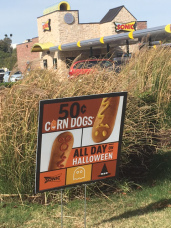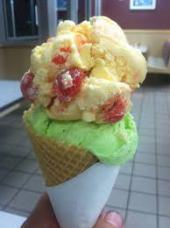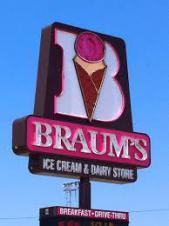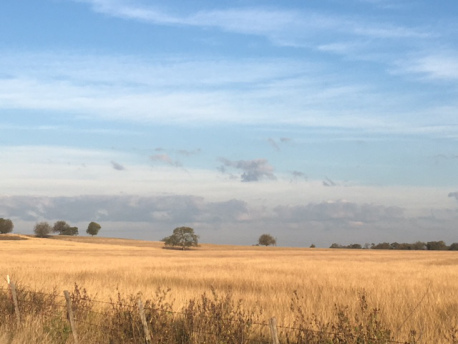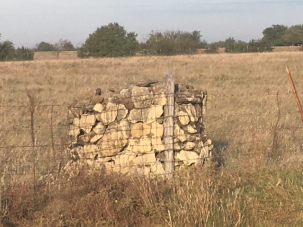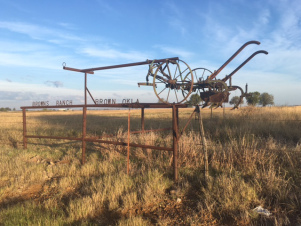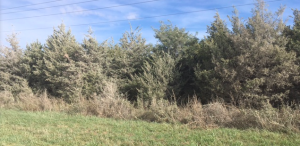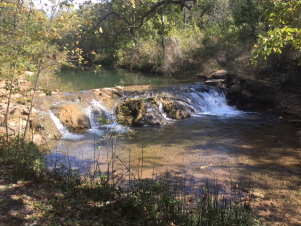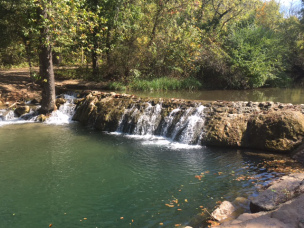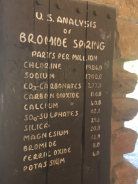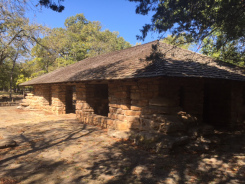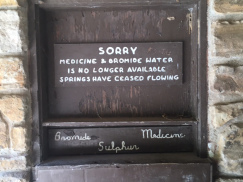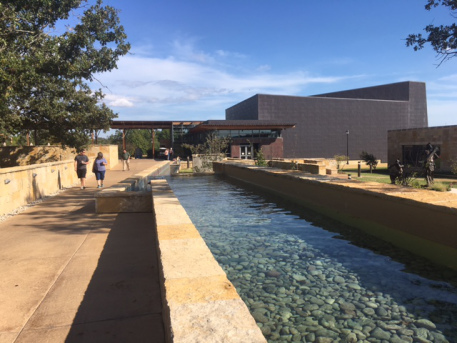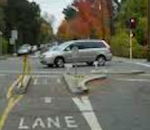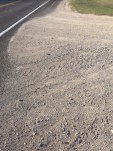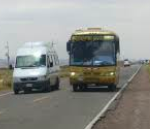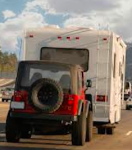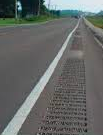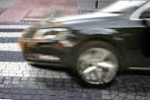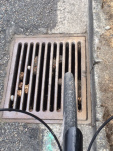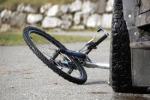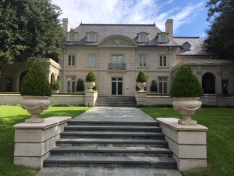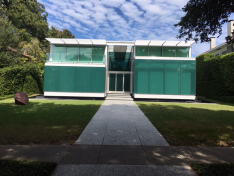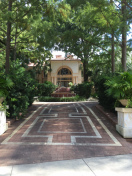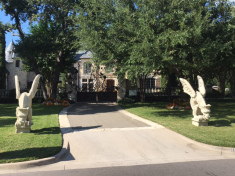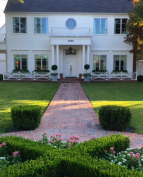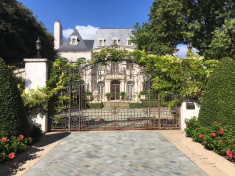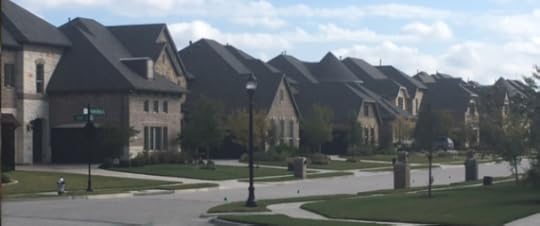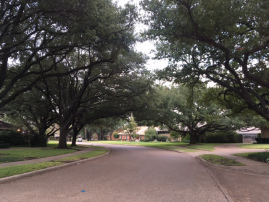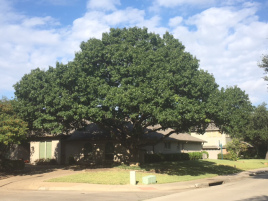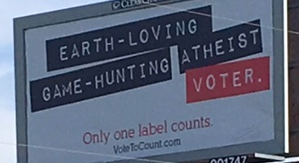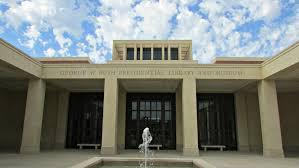Paul E. Fallon's Blog, page 39
November 5, 2016
Trip Log – Day 363 – Oklahoma City OK
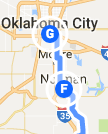 November 2, 2016 – Sunny, 80 degrees
November 2, 2016 – Sunny, 80 degrees
Miles Today: 21
Miles to Date: 18,777
States to Date: 46
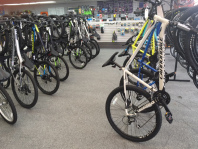 Bicycle maintenance day! Al’s Bicycles in OKC did a great job sprucing up Tom for his 2,000-mile check-up. While he was getting a new chain, cassette and tune-up, my high school friend Marion Paden took me to lunch – three hours food and talk to catch up on more than thirty years.
Bicycle maintenance day! Al’s Bicycles in OKC did a great job sprucing up Tom for his 2,000-mile check-up. While he was getting a new chain, cassette and tune-up, my high school friend Marion Paden took me to lunch – three hours food and talk to catch up on more than thirty years.
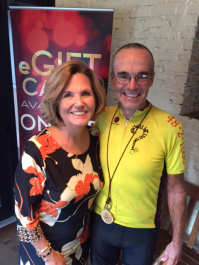 The short but harrowing ride to my nephew’s house included a left turn from the traffic lane of NW 122nd Street at Hidden Creek with rush hour cars racing toward me over the blind hill. Thanks to the considerate pick-up driver who stopped to left me escape that busy road.
The short but harrowing ride to my nephew’s house included a left turn from the traffic lane of NW 122nd Street at Hidden Creek with rush hour cars racing toward me over the blind hill. Thanks to the considerate pick-up driver who stopped to left me escape that busy road.
Jeff and Joey and I enjoyed a great evening of historic baseball as the Cubs shook off 108 years of coming up short. Jeff’s girlfriend Lana captured the identical, drab shirts and shorts all three of us wore. Fallon boys are not fashion setters.
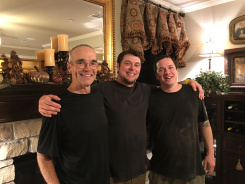 Tom settled into the garage for an extended break. Tomorrow I fly to Seattle to deliver the keynote address at the NW Sustainability Conference and spend a week with my niece and her boys while her husband is deployed in the Middle East.
Tom settled into the garage for an extended break. Tomorrow I fly to Seattle to deliver the keynote address at the NW Sustainability Conference and spend a week with my niece and her boys while her husband is deployed in the Middle East.
I will begin the last leg of my cycling journey on Monday November 14 and look forward to sharing more Trip Logs then.


November 4, 2016
Trip Log – Day 362 – Oklahoma City OK
 November 1, 2016 – Sunny, 80 degrees
November 1, 2016 – Sunny, 80 degrees
Miles Today: 20
Miles to Date: 18,756
States to Date: 46
There are two truths I run up against everywhere I go: our public education system is failing; our public library system is thriving.
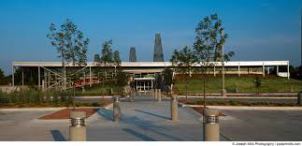 To paraphrase Dallas Police Chief’s David Brown’s remarks after five Dallas police officers were killed, ‘we ask to much of our public schools.’ We expect our schools to reflect the America we hope for – a place where our children are educated and fed and socialized and integrated; while in reality our culture devalues, often denigrates, education, tolerates hunger, fosters inequality, and remains largely segregated. People argue about funding and teacher salaries, unions and charters. But ultimately our schools are failing because they are not supported by the society they are supposed to prepare our children to enter. Teachers feel beaten down and unappreciated, parents feel shortchanged; taxpayers are unwilling to pour money into a floundering system.
To paraphrase Dallas Police Chief’s David Brown’s remarks after five Dallas police officers were killed, ‘we ask to much of our public schools.’ We expect our schools to reflect the America we hope for – a place where our children are educated and fed and socialized and integrated; while in reality our culture devalues, often denigrates, education, tolerates hunger, fosters inequality, and remains largely segregated. People argue about funding and teacher salaries, unions and charters. But ultimately our schools are failing because they are not supported by the society they are supposed to prepare our children to enter. Teachers feel beaten down and unappreciated, parents feel shortchanged; taxpayers are unwilling to pour money into a floundering system.
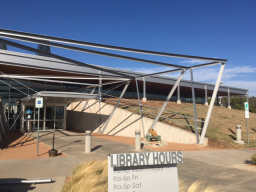 Our public libraries, on the other hand, are the most well utilized democratic institutions in our country. Libraries allow everyone, regardless of race or income, to access the information and technology necessary to be an informed citizen. I’ve visited hundreds of libraries across the country and am amazed at how well they’re used. Patrons respect these facilities. Librarians are consistently positive and helpful. I’ve observed librarians help non-English speaking adults navigate the Internet, assist transients in obtaining identification, and coordinate a line of homeless through the men’s room with patience and respect. They are not just reference sources; they are our new social workers.
Our public libraries, on the other hand, are the most well utilized democratic institutions in our country. Libraries allow everyone, regardless of race or income, to access the information and technology necessary to be an informed citizen. I’ve visited hundreds of libraries across the country and am amazed at how well they’re used. Patrons respect these facilities. Librarians are consistently positive and helpful. I’ve observed librarians help non-English speaking adults navigate the Internet, assist transients in obtaining identification, and coordinate a line of homeless through the men’s room with patience and respect. They are not just reference sources; they are our new social workers.
I spent most of the day at the new Patience Latting Library in Northwest Oklahoma City. When I arrived on a weekday morning most of the computer terminals were already occupied and I landed the last available study carrel. The 35,000 square foot, LEED building that opened in 2012 buzzed with purposeful inquiry. It’s bright interior is rich in Oklahoma imagery: skylights that evoke oil derricks on the roof top identify key elements of the open plan interior.
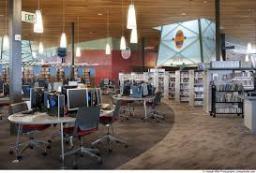 The $8.2 million facility cost is less than one quarter of this year’s Oklahoma City Schools capital budget. The schools don’t seem to get comparable bang for their buck.
The $8.2 million facility cost is less than one quarter of this year’s Oklahoma City Schools capital budget. The schools don’t seem to get comparable bang for their buck.
Schools are not a high priority in this state; Oklahoma ranks 46th in per pupil public school expenditure and people throughout the state report that teachers move for higher salaries. An effort to curb this trend, ballot initiative 779, would boost sales tax to increase teacher pay. Right now, it is polling favorably.
Libraries are not schools. They are elective rather than mandatory use facilities. But I can’t help thinking what make libraries so wonderful – that they serve across generations, that they invite independent inquiry, that they are staffed by people who support the patron’s interests rather than deliver prescribed content – are ingredients we ought to stir into our efforts to revitalize our schools.


November 3, 2016
Trip Log – Day 361 – Oklahoma City OK
 October 31, 2016 – Sunny, 80 degrees
October 31, 2016 – Sunny, 80 degrees
Miles Today: 24
Miles to Date: 18,736
States to Date: 46
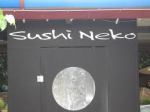 I indulge in local culinary delights of the highbrow and fast food variety wherever I go. Today an old high school friend invited me to her favorite sushi place for lunch. Delicious.
I indulge in local culinary delights of the highbrow and fast food variety wherever I go. Today an old high school friend invited me to her favorite sushi place for lunch. Delicious.
Unfortunately, sushi hardly fills a guy pedaling against the Oklahoma wind, so I bookended lunch with snacks from Oklahoma’s premier fast food emporiums: a mid-morning pair of Sonic Drive-in 50 cent Halloween corndogs and a Braum’s double dip cone in the afternoon. Warning label: my diet is hazardous to the health of anyone burning less than 4,000 calories a day.


November 2, 2016
Trip Log – Day 360 – Norman OK to Oklahoma City OK
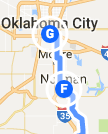 October 30, 2016 – Overcast, 75 degrees
October 30, 2016 – Overcast, 75 degrees
Miles Today: 48
Miles to Date: 18,712
States to Date: 46
Oklahoma City went from 0 to 10,000 citizens in a day: April 29, 1889. For the next hundred years, OKC continued to be a boom and bust place: many credit the 1980’s recession with the failure of Oklahoma City’s Penn Square Bank.
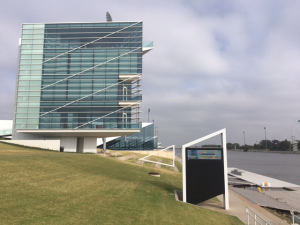 In the 1990’s, while the city was still recovering from the fallout of Penn Square, Mayor Ron Norick and the Chamber of Commerce proposed MAPS (Metropolitan Area Projects), an innovative way to fund specific capital projects bundled together for broad appeal through a one percent city sales tax, overseen by a citizen’s committee rather than a government agency, and built with cash derived from the tax rather than bonds. Over the past twenty years, voters have passed three specific MAPS initiatives. In the process, OKC has boosted its urban core, diversified its economy, and become nationally known as both a progressive and easy place to do business.
In the 1990’s, while the city was still recovering from the fallout of Penn Square, Mayor Ron Norick and the Chamber of Commerce proposed MAPS (Metropolitan Area Projects), an innovative way to fund specific capital projects bundled together for broad appeal through a one percent city sales tax, overseen by a citizen’s committee rather than a government agency, and built with cash derived from the tax rather than bonds. Over the past twenty years, voters have passed three specific MAPS initiatives. In the process, OKC has boosted its urban core, diversified its economy, and become nationally known as both a progressive and easy place to do business.
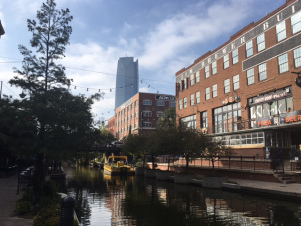 I cycled through downtown on a lazy Sunday afternoon, visiting the Boathouse District (OKC created a permanent basin off the North Canadian River to become the center of US Olympic Rowing), and Bricktown, a San Antonio-like canal and warehouse district.
I cycled through downtown on a lazy Sunday afternoon, visiting the Boathouse District (OKC created a permanent basin off the North Canadian River to become the center of US Olympic Rowing), and Bricktown, a San Antonio-like canal and warehouse district.
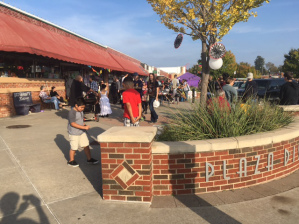 OKC’s initiatives are not limited to downtown. A few blocks from where I lived in the 1980’s an abandoned theater and grocery store became home to the Lyric Theater. The city throttled traffic and expanded the sidewalks. The Plaza District became the hot place to be in a city that, for many years, had few cohesive places at all.
OKC’s initiatives are not limited to downtown. A few blocks from where I lived in the 1980’s an abandoned theater and grocery store became home to the Lyric Theater. The city throttled traffic and expanded the sidewalks. The Plaza District became the hot place to be in a city that, for many years, had few cohesive places at all.


November 1, 2016
Trip Log – Day 359 – Pauls Valley OK to Norman OK
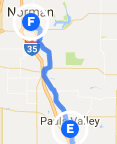 October 29, 2016 – Sun, 85 degrees
October 29, 2016 – Sun, 85 degrees
Miles Today: 60
Miles to Date: 18,664
States to Date: 46
Back in College Station TX I visited the land that inspired my New York born father to pioneer west. Our Conestoga wagon was a Winnebago. His strong-willed wife refused his lead and insisted we settle 350 miles to the north. Our homestead was not 160 acres, but a brick ranch that we could not inhabit until the bankers were satisfied. We did not circle the wagons at night; we parked in the Safeway parking lot. I did not rise with the dawn to help with chores; I unhitched my bicycle from the back of the motorhome and pedaled against the wind to school. To any rational 1971 eyes we lived in suburban America. In my fathers eyes we were battling the elements and conquering the West circa Oklahoma Land Run 1889.
 My father’s business never prospered. The bank took back the Winnebago, then the ranch. My parents shuffled among houses and apartments all over town. My mother went to work. My father drank more. Eventually they split. The pioneer returned to New Jersey, his dream unrealized.
My father’s business never prospered. The bank took back the Winnebago, then the ranch. My parents shuffled among houses and apartments all over town. My mother went to work. My father drank more. Eventually they split. The pioneer returned to New Jersey, his dream unrealized.
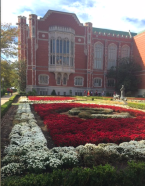 Meanwhile, I arrived in Oklahoma with a mop of bad hair, a thick accent, and an urban attitude to match. But I thrived. I landed at University High School in the middle of my junior year, met great friends, dated a terrific girl whom I eventually married, and got accepted to MIT, in part, I am certain, because I applied from a geographically sparse niche. Less than two years after becoming an Okie I shipped out to college. My lasting lesson of heartland was appreciation for all regional attributes our country embraces and the conviction that our commonalities are more plentiful than those differences.
Meanwhile, I arrived in Oklahoma with a mop of bad hair, a thick accent, and an urban attitude to match. But I thrived. I landed at University High School in the middle of my junior year, met great friends, dated a terrific girl whom I eventually married, and got accepted to MIT, in part, I am certain, because I applied from a geographically sparse niche. Less than two years after becoming an Okie I shipped out to college. My lasting lesson of heartland was appreciation for all regional attributes our country embraces and the conviction that our commonalities are more plentiful than those differences.
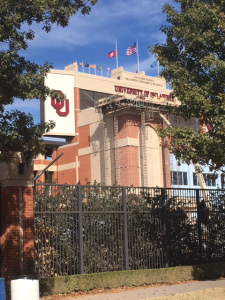 Norman’s physical fabric, so transformed between 1889 and 1973, has stabilized in the last 43 years. True, University of Oklahoma Football stadium is getting enlarged again, like an inflatable toy that refuses to pop: 87,000 seats plus an attached parking garage so fat donors can drive to their skybox. Sure, the commercial strip along I-35 is banal as any in America. But everything else is much the same. OU’s campus is still anchored by a pair of handsome ovals. Main Street storefronts survive despite the big box stores. The wooden bungalows in the older part of town still need a coat of paint. The brick houses in the subdivisions beyond appear smaller only because the trees have grown.
Norman’s physical fabric, so transformed between 1889 and 1973, has stabilized in the last 43 years. True, University of Oklahoma Football stadium is getting enlarged again, like an inflatable toy that refuses to pop: 87,000 seats plus an attached parking garage so fat donors can drive to their skybox. Sure, the commercial strip along I-35 is banal as any in America. But everything else is much the same. OU’s campus is still anchored by a pair of handsome ovals. Main Street storefronts survive despite the big box stores. The wooden bungalows in the older part of town still need a coat of paint. The brick houses in the subdivisions beyond appear smaller only because the trees have grown.
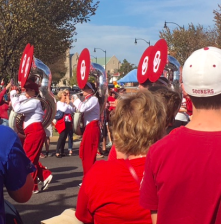 I arrived on Homecoming Day. Campus buzzed with anticipation of the night game against University of Kansas. The parade down Boyd Street could have been a Jimmy Stewart movie: Pride of Oklahoma marching band, cheerleaders, Greek letter fraternities and sororities. But a few boys wore pink shirts with the OU logo, women with cropped hair held hands, interracial couples clapped along with everyone else, one Homecoming Queen candidate was from Mumbai.
I arrived on Homecoming Day. Campus buzzed with anticipation of the night game against University of Kansas. The parade down Boyd Street could have been a Jimmy Stewart movie: Pride of Oklahoma marching band, cheerleaders, Greek letter fraternities and sororities. But a few boys wore pink shirts with the OU logo, women with cropped hair held hands, interracial couples clapped along with everyone else, one Homecoming Queen candidate was from Mumbai.
When I first came to Norman Mumbai was Bombay, and we didn’t consider anyone from there pretty. Girl’s held hands as a joke, interracial couples hid, and boys’ didn’t wear pink shirts – period. The physical fabric of this college town may be little changed, but the society it supports has blossomed in directions this oxford-clothed high schooler could never have imagined.


October 31, 2016
Trip Log – Day 358 – Durant OK to Pauls Valley OK
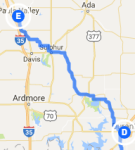 October 28, 2016 – Sun, 85 degrees
October 28, 2016 – Sun, 85 degrees
Miles Today: 96
Miles to Date: 18,664
States to Date: 46
It was a great day to be a cycle tourist, and a great day for singing. I woke to a bright golden haze on the meadow. Yes, a bright golden haze on the meadow.
The ranches are immense, bounded by stone cairns and highlighted by rustic signs.
Mill Creek has few people but several strip mines for limestone and silica. The dust from the Martin Marietta plant fills the air and coats the trees.
Chickasaw National Recreation Area in Sulphur has picturesque waterfalls. I pedaled five miles out of my way to indulge in the Bromide Springs that made the place a mecca for tourists over a hundred years ago, only to find that the springs have dried up.
The Trail of Tears, in which the ‘Five Civilized Tribes’ (Cherokee, Choctaw, Creek, Chickasaw and Seminole) were resettled from their original lands east of the Mississippi to the area that is now Oklahoma, is an ugly chapter in our historical abuse of native peoples. Then, we infiltrated their new lands anyway. But the history and status of Native Americans in Oklahoma is quite different from other parts of the west because there are no reservations. Nine percent of Oklahomans are Native Americans, similar to South Dakota and New Mexico. Yet, they are much more integrated into society.
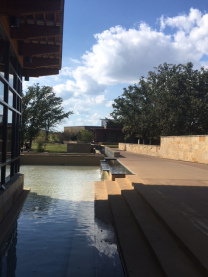 Given enough time histories losers can become big winners. Today, the tribes are cashing in our penchant for gambling. The Choctaw casino in Durant and the Chickasaw casino just north of the Red River are glittering places where, mainly Texans, pay Native Americans to spin and roll and poker. The Chickasaw have invested some of their profits on the Chickasaw National Cultural Center: a stunning series of pavilions organized around walks and water elements reminiscent of the Getty Museum with a Native American tilt. I was particularly pleased to see that Frankfurt Short Bruza, the Oklahoma City firm where I began my career, designed the elegant place.
Given enough time histories losers can become big winners. Today, the tribes are cashing in our penchant for gambling. The Choctaw casino in Durant and the Chickasaw casino just north of the Red River are glittering places where, mainly Texans, pay Native Americans to spin and roll and poker. The Chickasaw have invested some of their profits on the Chickasaw National Cultural Center: a stunning series of pavilions organized around walks and water elements reminiscent of the Getty Museum with a Native American tilt. I was particularly pleased to see that Frankfurt Short Bruza, the Oklahoma City firm where I began my career, designed the elegant place.
Indian summer prevailed, the wind remained at my back, and I reached Pauls Valley in daylight; a long travel day filled with worthwhile sights.


October 30, 2016
Trip Log – Day 357 – McKinney TX to Durant OK
 October 27, 2016 – Sun, 80 degrees
October 27, 2016 – Sun, 80 degrees
Miles Today: 75
Miles to Date: 18,568
States to Date: 46
Kudos to me: I have survived Texas yet again. The first time I exited the Lone Star State I enumerated the finer points of heckling. After 18,000+ miles, I’m keyed into the hazards cycle tourists face living on the shoulder. Pedal at your peril:
Shoulder debris
Right turns from side street. Make eye contact with everyone entering from the right. Curse those tinted windshields.
Shoulder gravel. Slow down or skid.
Trucks passing cars in the oncoming lane. They gun right down on you.
RV buses pulling autos, usually driven by retired men without commercial license who are Masters of the Universe in their minds but don’t really understand how big their rigs are. Oh, and they sometimes forget to push the side steps under the chassis before pulling out of their driveway, which can clip you right in the ankle.
Right turns from behind. People in a hurry, which is pretty much everyone, will not yield to a cyclist.
Rumble strips in the shoulder. Instant migraine.
Darting across a main road from a side street. Who looks for cyclists?
Single direction drainage grates aligned with your tires. I yield to all drainage grates. Get your tire stuck in one of these and you’re flying over your handlebars.
Unsignaled left turns. Been there, done that. Can’t blame that one on Texas, but I am wary of it at every intersection.


October 29, 2016
Trip Log – Day 356 – Dallas TX to McKinney TX
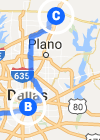 October 26, 2016 – Sun, 80 degrees
October 26, 2016 – Sun, 80 degrees
Miles Today: 44
Miles to Date: 18,493
States to Date: 45
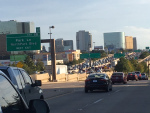 Scottsdale is stylish money, Boston is old money, San Jose is tech money, New Orleans is fun money, La Jolla is laid-back money, Altoona is hard scrapple money, East St Louis is no money. Dallas is simply money – lots and lots of money. One of my hosts, who’s lived here thirty years said, “I can never get over how much money there is in this city.”
Scottsdale is stylish money, Boston is old money, San Jose is tech money, New Orleans is fun money, La Jolla is laid-back money, Altoona is hard scrapple money, East St Louis is no money. Dallas is simply money – lots and lots of money. One of my hosts, who’s lived here thirty years said, “I can never get over how much money there is in this city.”
Indeed, my trek from Uptown, along Turtle Creek, through Highland Park, University Park and Preston Hollow, Northeast Dallas and Vickery Meadow, Plano, Allen and finally McKinney took me through miles and miles of million dollar homes. There are subtle differences among these neighborhoods. Closer in, architectural styles vary, but symmetry rules. Order conveys power.
Further out, everything is vaguely English and arbitrarily asymmetrical. Roofs have too many gables and hips to count. On one street, every single house had a turret. Which, of course, neuters the whole idea that turrets define corners.
Rich people in Dallas buy what all America’s purchase with their money: privacy. As a result, it is rare to meet an actual human. Houses are self-contained and air-conditioned, garages are attached. There are few parks, few sidewalks, no place for a cyclist at all. People walk their dogs in the morning and evening, and offer uniformly pleasant greetings. Canines remain humanities best hope.
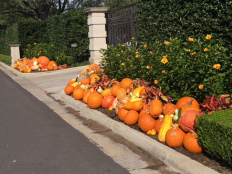 Of course, with money comes excess. Why place a pumpkin on your porch when you can scatter enough along your curb to feed an entire village in the developing world.
Of course, with money comes excess. Why place a pumpkin on your porch when you can scatter enough along your curb to feed an entire village in the developing world.
Before you decide I’m too harsh on The Metroplex, I will mention two things I absolutely love about Dallas.
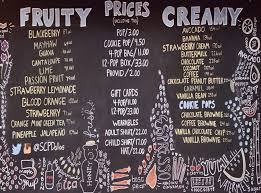 First, Steel City Pops, Lower Greenwood that serves up frozen concoctions for a mere three dollars. I will long remember my creamy pumpkin treat. At first bite you think, ‘I wish Steel City was everywhere.’ Then you realize, no, you are glad there are only a few locations for this unique experience.
First, Steel City Pops, Lower Greenwood that serves up frozen concoctions for a mere three dollars. I will long remember my creamy pumpkin treat. At first bite you think, ‘I wish Steel City was everywhere.’ Then you realize, no, you are glad there are only a few locations for this unique experience.
Second are Dallas’ commanding street trees: huge dome-shaped bouquets with wide arms that often span across the pavement. The best streets have one huge tree on each front lawn. In subdivisions of low-slung mid-century ranches, the trees create a canopy that links the shallow roofs. All Dallas really needs is for the citizens to come outdoors, sit in the shade of their magnificent specimens, and chat. It won’t happen; there’s no money in that.


October 28, 2016
Trip Log – Day 355 – Dallas TX
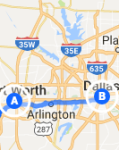 October 25, 2016 – Sun, 75 degrees
October 25, 2016 – Sun, 75 degrees
Miles Today: 12
Miles to Date: 18,449
States to Date: 45
I voted today. It wasn’t easy: sending a letter to the Cambridge Election Commission a month ago, requesting a ballot mailed to an address where I would land after the October 12 mail out date with enough time for it to get back to Cambridge before November 8, filling in the oval circles, pedaling to a 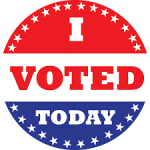 post office in Dallas, just to have my vote counted in a state where my ballot won’t possibly matter. Massachusetts is blue as the Texas sky.
post office in Dallas, just to have my vote counted in a state where my ballot won’t possibly matter. Massachusetts is blue as the Texas sky.
By any economic measure, voting is a waste of time, unless perhaps you live in a swing state. But if I’ve learned anything in my year on a bicycle it’s that economic measures are often too meager. I take the time to vote because it’s a civic right; a tangible, if tiny, way to participate in our governmental process; a process that will only get better if more people vote. In a world where a mere 13% of people live in ‘full democracies,’ I vote because I can.
I hope that you vote too, by absentee ballot, by early voting, or on November 8. It is our privilege. It is our responsibility. It is how we shape our nation.


October 27, 2016
Trip Log – Day 354 – Dallas TX
 October 24, 2016 – Sun, 75 degrees
October 24, 2016 – Sun, 75 degrees
Miles Today: 16
Miles to Date: 18,437
States to Date: 45
Every presidential library reflects the nature of the man it portrays. Here is the letter I sent to the visitor email address after my visit to the George W. Bush Presidential Library and Museum:
Greetings –
I am a cyclist on a journey to visit the 48 contiguous states. Along the way I ask folks the question, “How will we live tomorrow?” So far, I have travelled over 18,000 miles, visited 45 states, asked thousands of people my question and profiled over 400 individuals and organizations about their view of our future. The adventure has revealed American’s innate generosity and trust.
I’ve also visited nine presidential libraries. On Monday October 24 I visited library number ten: The George W. Bush Presidential Library. I thought you might be interested in the reception I received.
I locked my bike to the rack at the bus stop along the main road. I entered the library courtyard, in my yellow cycling shirt, carrying a pair of yellow panniers. A gentleman in a blue blazer with numerous pins on his lapel approached me. “Are you delivering pizzas?” “No,” I replied. “Then what are you here for?” I told him I was here to visit the museum. He gave me a look of doubt. “I thought you were delivering pizzas.”
I proceeded to the security area. The first words from the guard were, “What are you delivering?” With little patience, I told her that I wasn’t delivering anything. “So what’s in your bags?” I told her I’m a long distance cyclist; these were my belongings. “I hope you know you’ll have to check them.” I said, “Of course I want to check them.”
In my cycling clothes I look no more like a delivery person than you do in your office attire. However, I do look very different from people wearing street clothes. The message that your staff conveys loud and clear is, ‘if you look different you will be treated with suspicion rather than respect.’
After visiting hundreds of public places and private businesses in my cycling uniform and being greeted with curiosity and good cheer by oil company executives, permaculture farmers, police officers, and homeless individuals, I am appalled by the unprofessional manner in which your staff addressed someone differently dressed. I hope you are as well.
The message of compassion expressed throughout the exhibits of the George W. Bush Presidential Library do not ring true after a person is so rudely treated by the museum’s staff.



